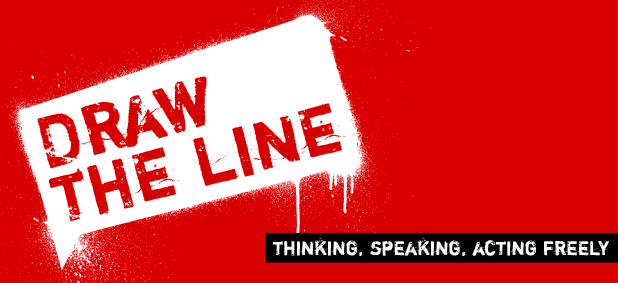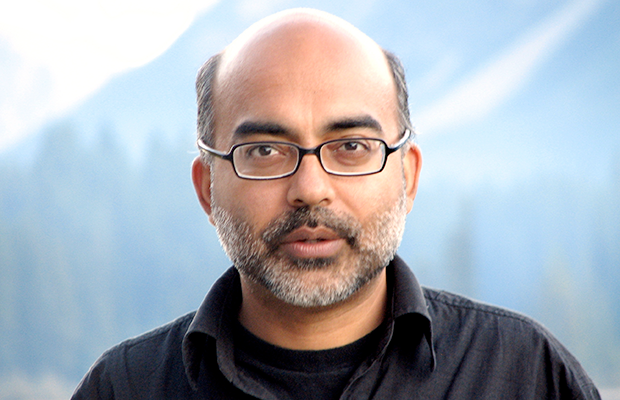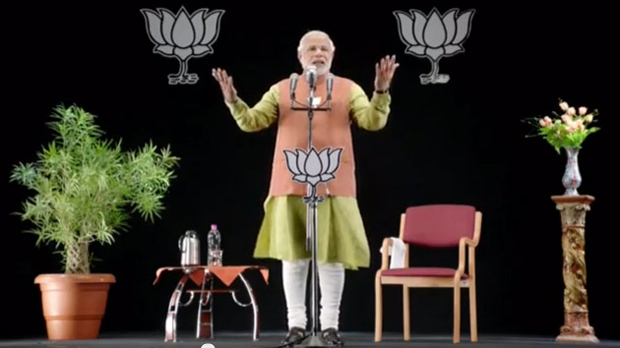15 Dec 2014 | About Index, Draw the Line, Young Writers / Artists Programme

Religious freedom and religious radicalism which leads to extremism has become an increasingly difficult balancing act in the digital age where presenting religious superiority through fear and “terror” is possible both locally and internationally at internet speeds.
The ongoing series of beheading videos released by the Islamic State and the showcase of kidnapped school girls by Nigeria’s Boko Haram on YouTube are both examples that test the extent to which the UN Convention of Human Rights can protect religious freedoms. According to a report by the International Humanist and Ethical Union, Egypt’s Youth Ministry are targeting young atheists vocal on social media about the dangers of religion. In Saudi Arabia, Raef Badawi was sentenced to seven years in prison in 2013 and received 600 lashes for discussing other versions of Islam, besides Wahhabism, online.
Article 18 of the Convention states that the “right includes freedom to change his religion or belief, and freedom, either alone or in community with others and in public or private to manifest his religion or belief in teaching, practice, worship and observance”. The interpretation of “practice” is a grey area – especially when the idea of violence as a form of punishment can be understood differently across various cultures. Is it right to criticise societies operating under Sharia law that include amputation as punishment, ‘hadd’ offences that include theft, and stoning for committing adultery?
Religious extremism should not only be questioned under the categories of violence or social unrest. Earlier this month, religious preservation in India has led to the banning of a Bollywood film scene deemed ‘un-Islamic’ in values. The actress in question was from Pakistan, and sentenced to 26 years in prison for acting out a marriage scene depicting the Prophet Muhammad’s daughter. In Russia, the state has banned the publication of Jehovah’s Witness material as the views are considered extremist.
In an environment where religious freedom is tested under different laws and cultures, where do you draw the line on international grounds to foster positive forms of belief?
This article was posted on 15 December 2014 at indexoncensorship.org
5 Nov 2014 | Guest Post, India, News and features, Politics and Society, Religion and Culture

Novelist Jaspreet Singh’s latest novel Helium explores the far-reaching impact of November 1984.
That November is a memory of fire. I saw a burned book, first time in my life. That November my sister’s school was partly reduced to ashes. My entire family survived one of the darkest moments in recent Indian history.
Only a few days before, still recovering from jaundice, I had walked faster than usual to my own school in South Delhi. Around mid-day, we were in the biology lab, dissecting. A strong odour of chloroform filled the laboratory. That is when our biology teacher cancelled the class and walked to my bench and put an arm around my shoulder. You walk carefully all the way back home, she said.
I made it home. But a couple of days later, a mob passed by our block, attacking Sikh citizens. We were the lucky ones. We were able to take refuge in a courageous neighbour’s house.
“Those who survived are not true witnesses.” The Italian writer Primo Levi’s insight into mass violence in Europe is also valid for Delhi and other cities across India.
Only the dead are true witnesses. But the living have come to know a lot. That November 1984, India’s ruling Congress Party used state-controlled radio, television and the dreaded police force to conduct a seamless genocidal pogrom. After Indira Gandhi’s assassination, her son Rajiv Gandhi succeeded her as prime minister and enabled the carnage. Nothing was spontaneous. Cabinet ministers and members of parliament hired and directed mobs to burn to death as many Sikhs as possible. Women were brutally gang-raped. Across India.
Days later, Rajiv Gandhi, justified the violence. Instead of being denounced, he led his party to a landslide victory in parliamentary elections that year, and rewarded several perpetrators by making them cabinet ministers.
Three decades later, not a single prominent politician, cabinet minister, bureaucrat, judge or high-ranking police officer has been brought to justice. (No full and independent inquiry was ever conducted.)
To this day the Indian Parliament has not condemned the anti-Sikh pogrom. The event is wrongfully referred to as “riots”. In vain one looks for hope within society, but it seems the depths of horror and suffering do not disturb the inner life of the nation. A huge crime against humanity has been reduced to a “Sikh issue.” As recently as this year, Rajiv Gandhi’s son, Rahul, tried to defend the indefensible, denying the criminal culpability of his late father.
As much as the Congress party would like to forget, every November there is an anniversary, and the ghosts of 1984 return. The new ruling Bharatiya Janata Party (BJP), led by Narendra Modi, selectively invokes 1984 for its own perverse reasons. (This party was responsible for the 2002 Gujarat violence, a pogrom it would like to forget).
To date, the Modi government has taken no steps to provide justice to the victims of the pogrom in 1984.
India’s “democracy” has failed the victims and survivors extraordinarily for the last 30 years. Justice Ranganath Misra, a sitting supreme court judge, the first one to investigate the 1984 carnage went out of the way to suppress truth and to shield and absolve senior Congress party leaders. For his sinister services the party appointed him a member of the upper house of parliament and made him the first chairman of National Human Rights Commission of India. His report had caused a real outrage. Likewise Justice Nanavati’s 2005 report led to massive demonstrations by thousands of people still processing complicated grief and trauma.
For several years now it was unclear whether the international community was aware of the enormity of November 1984. But in 2011 Wikileaks revealed a slice of what the US government has known for a while: “…Congress party leaders competed with one another to see which wards would shed more Sikh blood.”
A pogrom is a wound on the psyche of the entire collective and without justice, mourning and reconciliation, mass-violence often recurs. It is time the United Nations and the country’s major trade partners start playing a prominent role to make India acknowledge the grand crime (committed against its own citizens) and reform its dangerously dysfunctional criminal justice system.
This essay was posted on Nov 5 2014 at indexoncensorship.org with permission of the author
19 Sep 2014 | Events, India

Index on Censorship in association with the Digital Empowerment Foundation, India, invite you to a workshop to launch Frontline Freespeech, a pilot project seeking to amplify the voice of individuals under pressure.
This workshop will bring together grassroots activists alongside leading free expression campaigners to share their recent experiences of censorship, to record and map current censorship challenges and to build impactful free speech networks in India.
A wide audience are expected to attend the workshop: campaigners, community leaders, network co-ordinators, human rights defenders, journalists, bloggers, artists, scholars and representatives of minority groups facing free expression challenges alongside key human rights organisations and independent media.
Wednesday 24th September 2014
Business Management Academy, Bangalore
To RSVP for this workshop please email Avesta Choudhary, [email protected], 011-26532786/87
Registration will close on Wednesday 17 September 2014 | PDF
27 Aug 2014 | Asia and Pacific, India, News and features

While campaigning to become prime minister, Narendra Modi addressed voters through 3D technology on several occasions (Photo: Narendramodiofficial/Flickr/Creative Commons)
Indians don’t usually take much notice of the prime minister’ speech on independence day in the middle of August. This year was different. This year there was so much discussion on social media that it became a trending topic.
In contrast to the way other prime ministers have handled this moment, new Prime Minister Narendra Modi of the Bharatiya Janata Party (BJP), wowed a large section of Indian society not just with what he said, but the way he said it. People are gushing over the fact that he spoke without notes, and did not use the usual bulletproof glass. Others are impressed with the content; he touched upon topics as diverse as rape, sanitation, manufacturing, and nation building, using easily accessible language. Modi is also using social media to get his views across direct to the public, and bypassing the mainstream media.
This straight-talking style only adds to Modi’s brand, but he is also attracting criticism from the mainstream media for not being willing to answer hard questions. His chosen methods of communicating with the public have one common thread: he prefers to address the public directly, plainly, without going through the mainstream media or any reliance on further explanation by them. His social media accounts on Facebook and Twitter have completely changed the way information comes out of the prime minister’s office (PMO). Modi’s tweets, both from his personal and his prime ministerial account, keep citizens updated on his various trips (“PM will travel to Jharkhand tomorrow. Here are the details of his visit”). He also updates on his musings (“I am deeply saddened to know about Yogacharya BKS Iyengar’s demise & offer my condolences to his followers all over the world”) and highlights from speeches made across the country (“when the road network increases the avenues of development increase too”), as well as photographs and videos. Citizens are getting a front row seat at his speeches and thoughts. But not everybody is happy about this — especially not the private mainstream media.
Unlike the previous government, Modi is yet to appoint a press advisor. That person, normally chosen from senior journalists in New Delhi, advises the prime minister on media policy. There isn’t a point person from the PMO for the mainstream media — or the MSM, as it is called — to discuss stories and scoops. He only takes journalists from the public broadcasting arms — radio and TV — on his foreign trips, in contrast to his predecessor, who brought along more than 30 journalists from the public and private channels. In fact, Modi has reportedly instructed his MPs to refrain from speaking to journalists. Indian mainstream media is filled with complaints that Modi is denying journalists the opportunity to engage with complex subjects like governance beyond official statements and limited briefings. Meanwhile, some other publications have scoffed that the mainstream media is only complaining because it will be forced to analyse the news and work towards coherent reporting instead of relying of well honed cosy relationships with people in power.
This apparent rift between the PMO and the private mainstream media has to be viewed through a variety of prisms for it to make any sense. The first is the very volatile relationship between Modi and the MSM which harks back to his time as chief minister of Gujarat, when a brutal communal riot took place. The second is the state of the mainstream media itself, continuously called out for unethical practices by the likes of the Telecom Regulatory Authority of India.
The relationship between Modi and the mainstream media is complex. No court has indicted Modi for any criminal culpability in the Gujarat riots of 2002, but many in the media have held him morally responsibly for the mass killings that carried on over three days, and let their feelings colour reports on him. But right before Modi’s historic sweep of the Indian general elections, this section of the press seemed to have begrudgingly warmed to the man they had long vilified.
One of India’s most respected journals, Economic and Political Weekly, published the article Mainstreaming Modi, deconstructing this new wave of coverage. It argued that the reasons for this change “range from how even the United Kingdom and the European Union have ‘normalised’ relations with him [Modi], that he has been elected thrice in a row to the chief ministership of Gujarat, which surely speaks of his abilities as an ‘efficient’ and ‘able’ administrator, that Gujarat has become corporate India’s favourite investment destination, and most importantly, that he is the guy who can take ‘decisions’ and not keep the nation waiting for action.”
During this year’s election campaign, Modi’s use of the media was innovative. Stump speeches were tailor made for the towns he was campaigning in. Modi’s 3D holograms, deployed in small towns while gave a speech elsewhere, were a spectacle not seen before in India. Though Modi had been speaking to Hindi and other Indian language media, he delayed giving interviews to the English language “elite” media, watched by a small but influential section of the population. He finally consented to doing a one-on-one interview with Arnab Goswami of Times Now, known as one of India’s loudest and most aggressive anchors. People readied themselves for the ultimate combative hour on television, but Modi’s no-nonsense answers, it seemed, won over both the anchor and the audience — especially as they were in sharp contrast to the vague statements put across by Modi’s challenger, Indian National Congress Party candidate Rahul Gandhi.
After the election win, India’s mainstream media has been forced to reassess what it wants from the prime minister. Is it information or is it access? The mainstream media undoubtedly has had a very complicated and close history with the political class. A Congress-led government has been ruling New Delhi for a decade, building up close relationships with senior editors and journalists. Some of these relationships were exposed through leaked conversations between members of the press and corporate lobbyists in a scandal now known as the Radia Tapes. They revealed, among other things, how journalists used their connections to politicians to pass on messages from lobbyists.
In fact, the indictment of improper behaviour by the media is a fairly regular occurrence in India. Just this month, the Telecom Regulatory Authority of India released their latest report, which recommends that corporate and political influence over the media can be limited by restricting their direct ownership in the sector. For this reason, the credibility and true affiliation of the media is always under the scanner.
But Modi and his team also need to respond to questions about why they will not deal with some parts of the media. How do they view the role of a combative media? Is only the public broadcaster, which reports the story as the government wants, to be allowed access? Are critical questions being avoided?
Perhaps, the last word can go to Scroll.in, one of India’s newest online magazines: “[T]he rat race for the ego scoop undermines the most important scoop, the thought scoop. We often don’t look at the big picture, don’t take the long view, don’t see the obvious, forget the past, don’t study the boring reports, substitute access journalism for ground reporting, believe the official word. Narendra Modi might just be doing us a favour by keeping us away.”
This article was posted on August 27, 2014 at indexoncensorship.org




